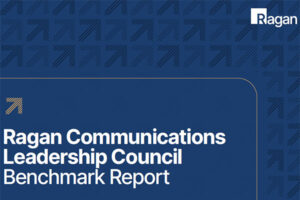Tapping ERGs to help during a crisis
ERGs can encourage employees in troubled times.

With crises abroad and at home continually playing out on the news, it can be difficult for an organization to know when to speak or what to say. During such turbulent moments, comms leads can easily feel overwhelmed and under-prepared for how to internally address external issues especially as employees look to company leaders.
If used thoughtfully, employee resource groups (ERGs) can be a vital tool in your crisis comms toolkit to engage employees, Christina Frantom, internal communications lead at Mercedes-Benz U.S. International, said.
[RELATED: Enhance, Advance, and Unify a DE&I Comms Strategy with Ragan’s DE&I Certificate Course]
“If your organization does not have ERG leadership at the planning and implementation table, you are behind,” Frantom said.
Before the crisis hits
Before even thinking about activating ERGs during a crisis, consider how often you engage with these groups now. Do you regularly check in with them to see how things are going or only connect if you have a comms request or other need? If it’s the latter, adjust your communication cadence and connect more frequently. You need time to foster trust and respect even in normal times to get the full benefit during a time of chaos.
“I think the key is to engage people outside of a crisis so during a crisis they feel prepared, settled and calm,” Frantom said.
To do that, ensure that comms leads connect with ERGs at regular intervals.
“This is where trust and relationship building is important,” Frantom said. “Make sure you have check-ins with them.”
Frantom also said to, “Maintain open communication with ERGs to gather feedback on company policies, practices, and communication strategies, ensuring they remain relevant and effective.”
Bring ERGs in at the beginning
When a crisis is underway, comms leaders can work with DE&I teams to “act as a unified voice in crisis,” Frantom noted. This means bringing ERGs in at the beginning of a crisis to create an in-depth response strategy that factors in all the employee groups.
“Ideally this work will be done ahead of time, as part of your standard communication planning process,” Frantom said. “You don’t want the crisis to be the first time these groups have seen an incident plan or worked together.”
Frantom said that the communication process for using ERGs to respond to crises can be broken down into four steps:
- Joint situation assessment – DE&I and comms leaders need to collaborate to understand the crisis, its potential impact on diverse employee groups and any existing vulnerabilities.
- Developing a tailored response – craft messaging that resonates with different employee segments, addressing their specific needs and concerns.
- Implementing the plan – use various and targeted communication channels to reach all employees effectively.
- Monitoring the situation – adapt messaging as needed, ensuring continued engagement and support.
ERGs bolster companywide messaging
Whether employees are directly or indirectly impacted by a crisis, they can feel vulnerable and uneasy. But ERGs can act as valuable crisis communications allies in a proverbial storm.
“ERGs provide valuable perspectives on how different employee groups might perceive and react to a crisis,” Frantom said. “Their lived experiences can inform targeted messaging and communication strategies.”
ERGs can speak to their workplace peers and offer statements of support or understanding. They can provide that extra layer of emotional backing that resonates with employees who might not be able to get that same result from a well-meaning C-suite member.
“ERGs can act as trusted intermediaries between employees and leadership, fostering open communication and reducing anxiety during a crisis,” Frantom said. “Their endorsement of company messaging can strengthen its impact.”
Frantom said that ERGs can support employees’ well-being simply through their in-person or virtual presence to share thoughts and fears. They can also offer a sense of community and belonging for employees facing challenges during a crisis.
Frantom added that ERGs can give employees important resources like mental health support or cultural competency training.
While this work is appreciated, it can be a big lift for busy employees with already full calendars and daily tasks to accomplish. Balancing the ERG work with a standard workday, however, is all in how you view it, Frantom said.
“It’s not something that’s separate from their day jobs,” Frantom said. “It’s something that’s incorporated into their work function. And so that’s where you’re going to find the success is not by treating DE&I and not treating ERGs in crisis communications as separate but incorporating them (into) the work process.”
Learn more about these and other relevant DE&I topics by joining us at Ragan’s Certificate Course on Jan. 24 and Jan. 31.
Sherri Kolade is a writer and conference producer at Ragan Communications. She enjoys watching old films, reading and building an authentically curated life. Follow her on LinkedIn. Message her if you have a great PR/comms speaker in mind for a Ragan event.







